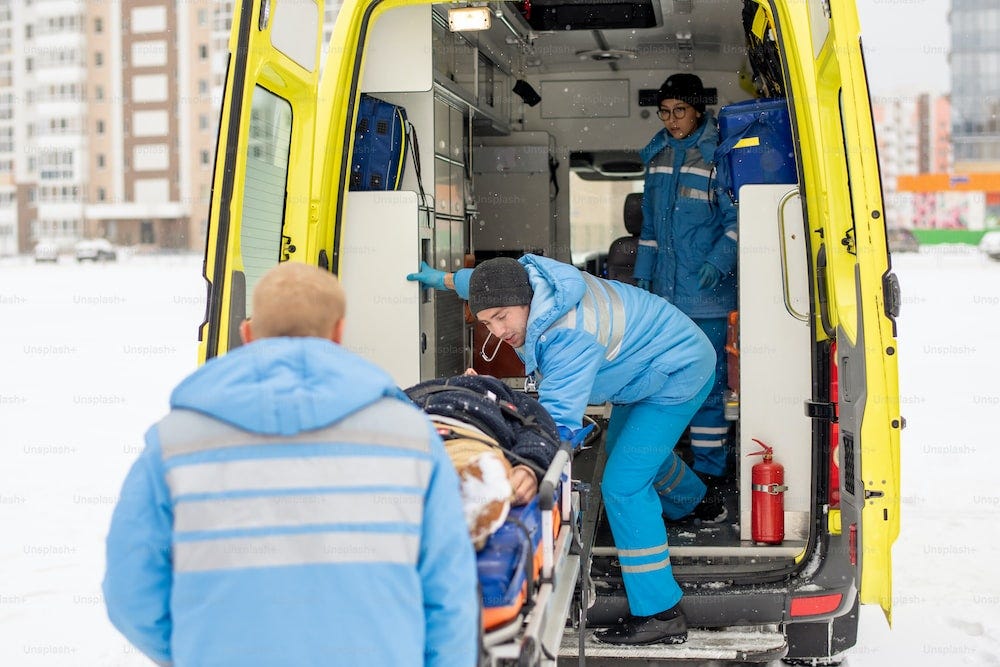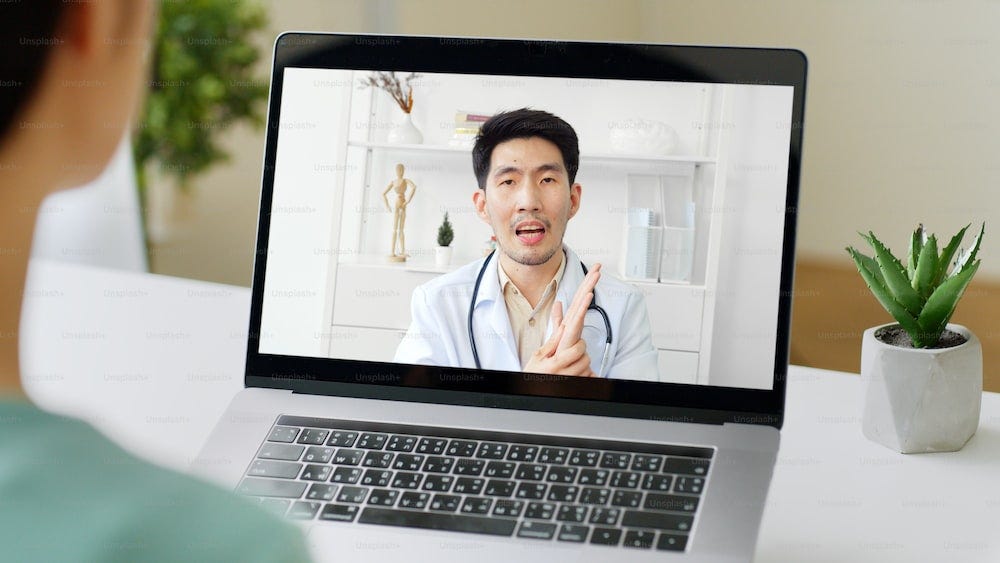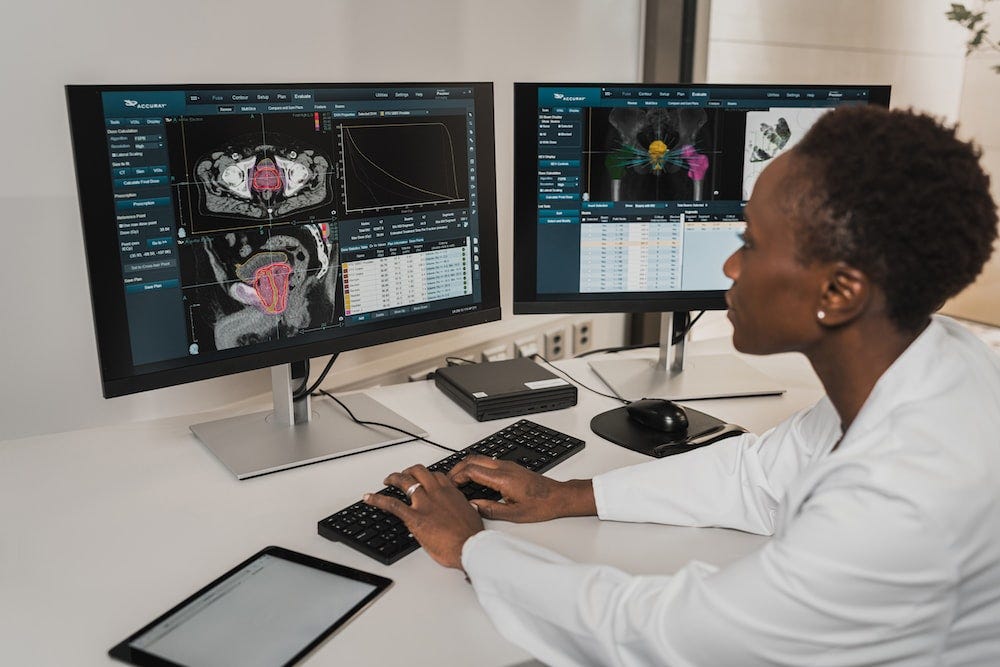How AI is Revolutionizing Healthcare Delivery and Accessibility
Charting the Future: AI and Medicine Redefining Possibilities

Access to quality healthcare is a fundamental human right, yet it remains a challenge for millions worldwide. Fortunately, artificial intelligence (AI) is proving to be a transformative force in improving healthcare accessibility. By reducing barriers, streamlining processes, and extending medical services to underserved populations, AI has the potential to revolutionize healthcare delivery. This article explores the current research, companies at the forefront, and future research directions in the realm of healthcare accessibility enhanced by AI.
Current Research

Telemedicine
Telemedicine has emerged as a cornerstone of healthcare accessibility research, with AI playing a central role. Studies are increasingly exploring how AI-driven telemedicine platforms can provide efficient, high-quality care, particularly in remote or underserved areas. For instance, ongoing research is optimizing telehealth consultations through AI-enabled chatbots that can efficiently collect patient data and provide preliminary assessments, making healthcare consultations more accessible and efficient. Remote patient monitoring is another thriving area of research. AI-driven devices, such as wearable sensors and IoT-connected health monitors, allow healthcare providers to remotely track patients' vital signs and health metrics. This real-time data enables early intervention, reduces hospital readmissions, and improves overall care accessibility, especially for individuals with chronic conditions.
AI in Diagnostic Imaging
Research in diagnostic imaging is leveraging AI to improve accessibility to radiological services. AI algorithms are enhancing the accuracy and speed of interpreting medical images, such as X-rays, MRIs, and CT scans. Ongoing studies are developing AI tools that can detect and characterize abnormalities in medical images, making it possible for healthcare facilities with limited access to radiologists to provide timely and reliable diagnoses. I-powered diagnostic systems are trained to identify subtle abnormalities that might be missed by even the most experienced radiologists. For example, in breast cancer detection, AI algorithms can pinpoint tiny, early-stage tumors that are challenging to detect manually. In regions with shortages of radiologists, AI can assist radiographers in capturing high-quality images. AI-driven image acquisition systems help ensure that scans are of diagnostic quality, reducing the need for repeat imaging and the associated costs and patient inconvenience.
Natural Language Processing:
Natural Language Processing (NLP) has emerged as a powerful tool in the quest to make healthcare information more accessible to diverse populations. This innovative field of research focuses on developing AI-powered chatbots, virtual assistants, and language models capable of understanding and generating human language. NLP algorithms are adept at processing and generating text in multiple languages, making them invaluable for breaking language barriers in healthcare. By simplifying complex medical jargon, NLP-based systems empower patients to make informed decisions about their healthcare and better understand their conditions. NLP algorithms can analyze user inputs to provide personalized health recommendations. By understanding a user's symptoms, concerns, and medical history, AI-powered systems can offer tailored advice on when to seek medical attention, provide self-care instructions, or suggest preventive measures. This personalized guidance ensures that healthcare information is relevant and actionable for each individual.
Companies

CVS Health
CVS Health is a healthcare powerhouse with a mission to make healthcare services more accessible and convenient. Their vast network of retail locations, including CVS Pharmacy stores and MinuteClinic walk-in clinics, offers a wide array of healthcare services. This includes vaccinations, medication consultations, wellness checks, and prescription fulfillment. CVS Health's commitment to healthcare accessibility is evident in its presence in communities nationwide. These accessible services help bridge healthcare gaps, particularly for individuals with busy schedules, those living in underserved areas, or those in need of immediate care. CVS Health's dedication to expanding healthcare access extends beyond traditional healthcare facilities, promoting the idea that healthcare should be within reach for all.
Remote Area Medical
Remote Area Medical (RAM) is a prominent nonprofit organization dedicated to providing essential healthcare services to underserved and remote communities across the United States and around the world. Founded in 1985 by Stan Brock, RAM is renowned for its innovative use of mobile healthcare units, including dental and vision vans, to bridge the healthcare gap in areas where access to medical care is limited or non-existent. RAM's mobile healthcare units are equipped with state-of-the-art medical equipment and staffed by dedicated healthcare professionals, including doctors, dentists, nurses, and volunteers. These units serve as "pop-up" clinics, reaching rural and isolated regions that often lack access to primary healthcare services. The organization conducts medical missions worldwide, responding to disasters and crises by deploying mobile medical units to deliver emergency healthcare services to affected populations. This global outreach underscores RAM's dedication to addressing healthcare disparities on a global scale
Future Research

AI-Driven Resource Allocation
Future research can investigate how AI algorithms can optimize resource allocation in healthcare, ensuring that medical facilities, personnel, and medications are distributed efficiently based on predicted demand. By harnessing AI's predictive capabilities, healthcare providers can respond proactively to changing needs and reduce disparities in resource availability. Research in this area can also explore the cost-effectiveness of AI-driven resource allocation models in diverse healthcare settings.
Rural and Underserved Populations
Future research should concentrate on evaluating the effectiveness of AI-powered solutions in addressing healthcare disparities in rural and underserved areas. This could involve assessing the impact of AI-supported mobile clinics, telehealth initiatives, and community health worker programs on improving healthcare access and outcomes. Researchers can also investigate the scalability and sustainability of these interventions in resource-constrained regions.
Health Literacy Support
Recently, there has been a greater push to focus on the development of AI-driven health literacy support tools, including chatbots and educational platforms, designed to enhance individuals' understanding of health information and improve their ability to navigate the healthcare system. This research should evaluate the effectiveness of these AI-powered tools in promoting health literacy, especially among populations with limited access to healthcare resources or educational opportunities. Additionally, future studies can investigate strategies to tailor health information delivery based on users' health literacy levels and language preferences to maximize accessibility and comprehension.

